
|   |

|   |
Ashta Darshana: A confluence of music and dance - Dr. Sunil Kothari e-mail: sunilkothari1933@gmail.com Photos: Avinash Pasricha June 13, 2013 Sudha Raghuraman, a trained classical Carnatic vocalist is a name to reckon with in the field of Carnatic music and classical dance, in particular Bharatanatyam. Based in Delhi she has carved a niche for herself with her support to Bharatanatyam (and also Kuchipudi exponents) by providing vocal music. Along with her husband flautist Raghuraman, they have become an indispensable team of musicians for dancers in Delhi. 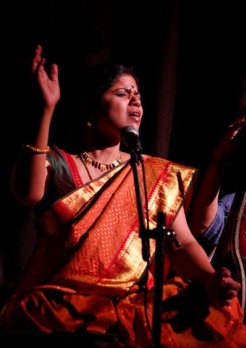 Sudha Raghuraman
Sudha organized a welcome program of classical music and Bharatanatyam dance by celebrated exponent Geeta Chandran at India International Centre on 8th June 2013. With a grant from Ministry of Culture, Govt. of India, Sudha had envisaged this unique program. Exploring the various layers of music vis-à-vis dance, they worked as a team for Ashta Darshana, an aesthetically well conceived program where the essential rasanubhuti, relish of aesthetic pleasure, was experienced in a large measure. While introducing the program, Rajiv Chandran observed: "Ashta, the number eight, does not limit to eight nayikas, eight rasas, but has a larger connotation and is multi- directional, having cosmic view. Where dance becomes catalytic agent to music, to expressions, linking movement to music, music to movement, taking into account the lyrics, the words, the associations and take off in realm of imagination, to unravel some mysteries of these arts. The two elements bhava, expressions and raga, melody merge giving rasikas delight." Sudha rendered a sloka extolling the supremacy of rasaraja sringara. Geeta explored that in abstractions to different musical accompaniments - to the notes of the flute, beats of mridangam, to recitation of solfa syllables, gentle murmur of cymbals and displayed nayika in different state of mind, as vasakasajja, adorning herself with ornaments, clothes of her choice, preparing bed, showering it with flowers, sprinkling scent, decorating bed chamber with strings of flowers, and anxiously awaiting the beloved with expectation, rushing to the door to look up if he has arrived. He has not and she as abhisarika moves out of the house to look out for him in the night, stealthily, removing her ankle bells, covering herself with a veil, crossing zig zag path, encountering a passing serpent, her saree caught up by a thorn, disentangling ,moving on. But he is still not to be found. The separation causes anguish, she cannot bear the sweet notes of the cuckoo bird, she finds the rays of the moon unbearable, reflects that preparing for meeting the lover is meaningless. Awaiting him, she hears a knock on the door and sees the truant lover, and in anger questions him for his late arrival. Hurt as a khandita nayika, she does not forgive him and closes the doors on him with pride and lets him go. All these expressions, states of mind of a nayika as interpreted by Geeta minus the sahitya, the text, the lyrics in abstract mode were communicative and danced with consummate artistry. The musicians and the dancer were on same wavelength. Sudha rendered Arunachala Kavirayar's composition "Yaro Ivar Yaro" in Bhairavi dwelling upon Rama's first glimpse of Sita in Mithila. The varying moods revolved round sringara. 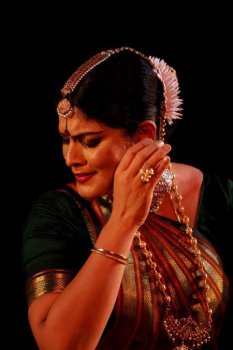 Geeta Chandran Also exploring the mood of separation of the nayaka, the hero, Geeta chose two compositions in Chaura meter, from Chaura Panchashika of poet Bilhan in which the agony of Bilhan in love with princess Amaravati was projected highlighting a nayaka's love for the nayika. The king had ordered death penalty for Bilhan as he did not approve of his daughter's marrying Bilhan. He recalls her unparalleled beauty, the moon like face, the full breasts, lotus like eyes, Kamadeva showering flowery arrows at her causing further excitement, and cries in anguish. Then he recalls how when she had shunned him in anger when he kissed her passionately and she was still angry, and burst into tears. Aghast at her tears, he falls at her feet and is unable to bear her absence. It is said that listening to such singing by Bilhan expressing his deep love for Amaravati, the king finally pardons him. In a specially designed costume by Sandhya Raman, Geeta impersonated Bilhan and emoted the associated bhavas, with the lyric and the words. In ekaharya lasyanga mode she enacted the roles of Bilhan and Amaravati distinctly switching them showing the plight of Bilhan in separation form Amaravati. Sudha followed in a solo rendering of a javali of Swati Tirunal in Bihag raga in a manner that the dance aficionados could almost visualize the nayika taunting the truant lover for his lies. In a padam of Gopala Krishna Bharati in Devagandhari raga to the soulful singing by Sudha, Geeta delineated subtle expressions with devotional fervor and feeling of surrender. Completely stunned by the grandeur of Lord Shiva in Devasabha with Shivakami, a devotee worships at his feet. The intense feeling of devotion came through both in singing and dancing. Sudha and Geeta concluded the programme with Sankirtan in praise of Radha and Krishna. The image of the yugal swaroopa, the divine couple, was envisaged through dance music competently. Renowned vocalist Pandit Madhup Mudgal was the chief guest who complimented the artists. Mridangam by Chandresekhar, tanpura by Diwanji, flute by G Raghuraman and nattuvangam by Sharnaya Chandran were in harmony, supporting Sudha in her vocals and Geeta for her dance. Deepa Dharmadhikari's lighting was evocative and created an excellent ambience. Sandhya Raman for designing the costumes, Arundhati Prasad for aesthetically arranging the stage and Amrita who looked after backstage requirements were also honoured on this occasion. The team work spoke volumes for such exquisite presentation. An evening of sheer delight and aesthetic joy. 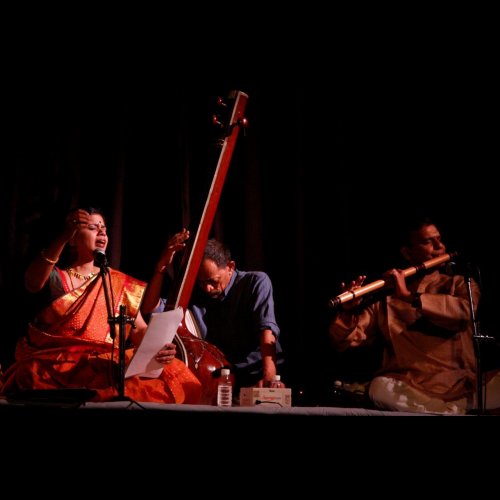
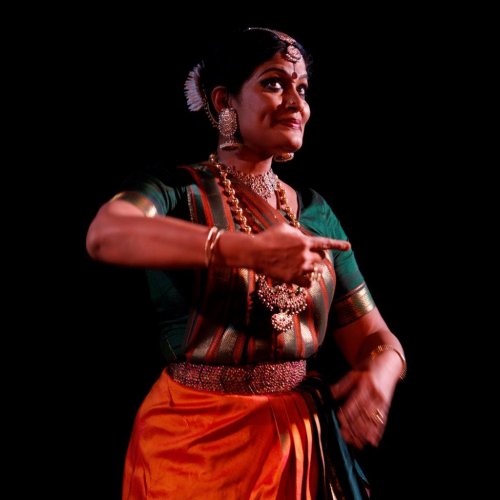
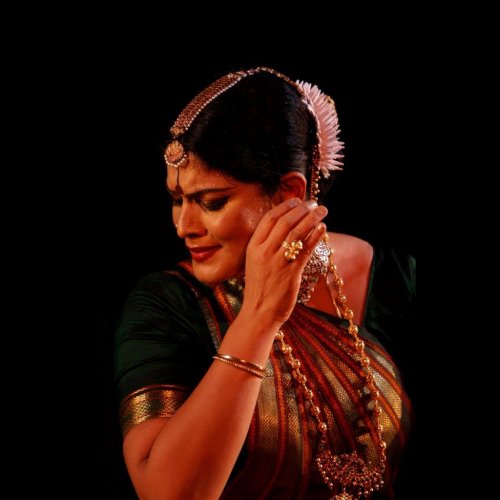
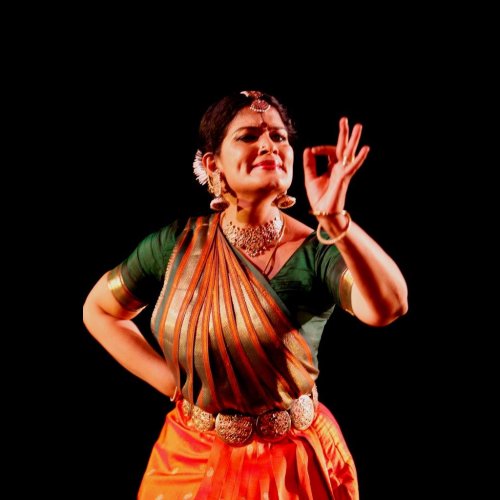
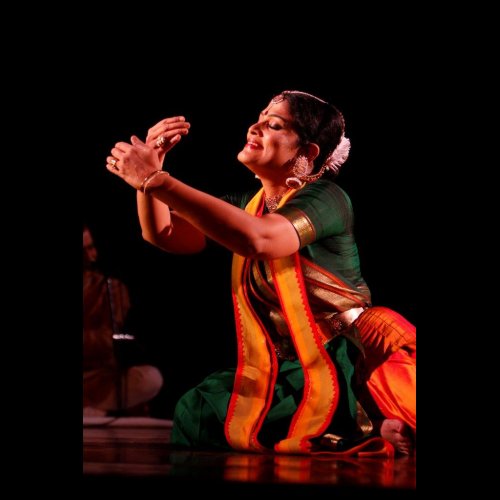
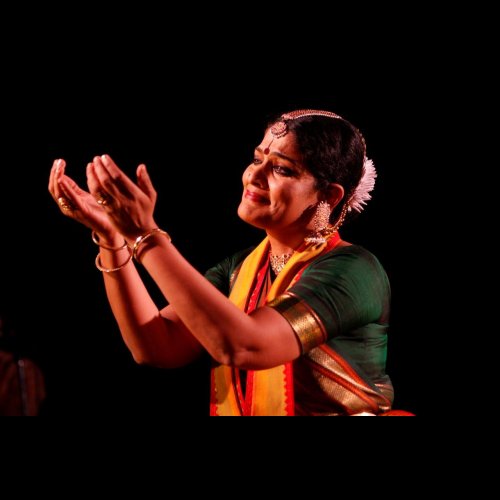
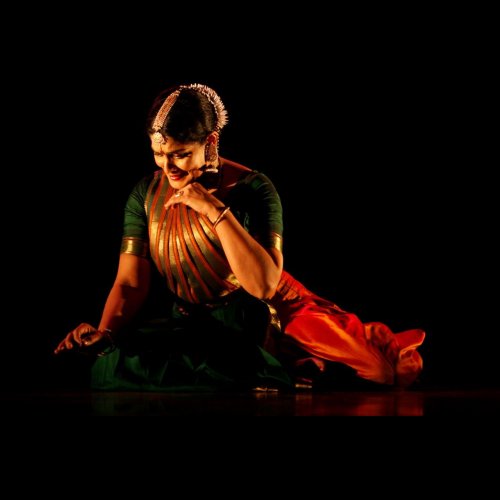
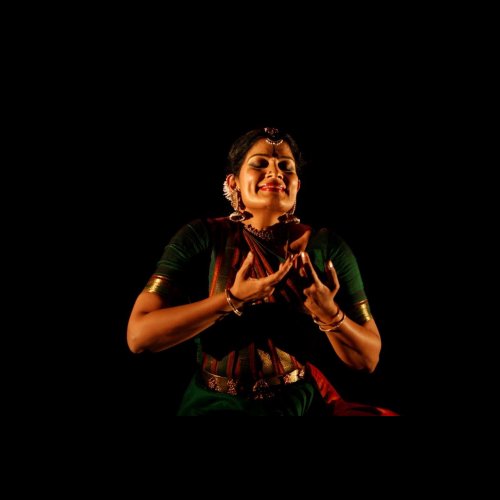
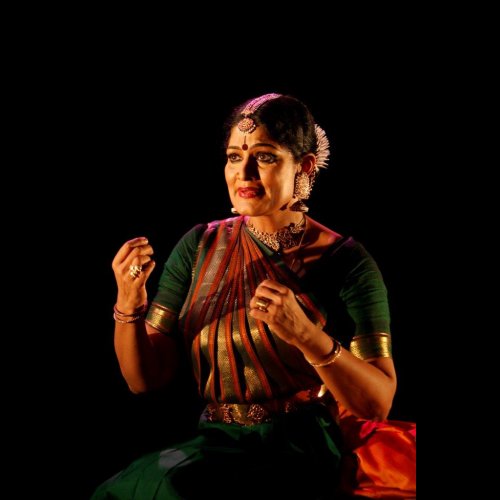
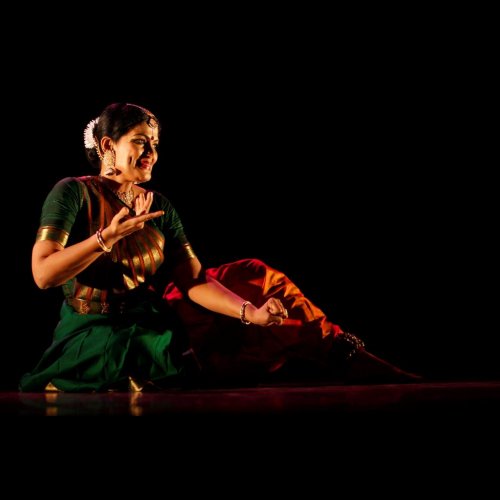
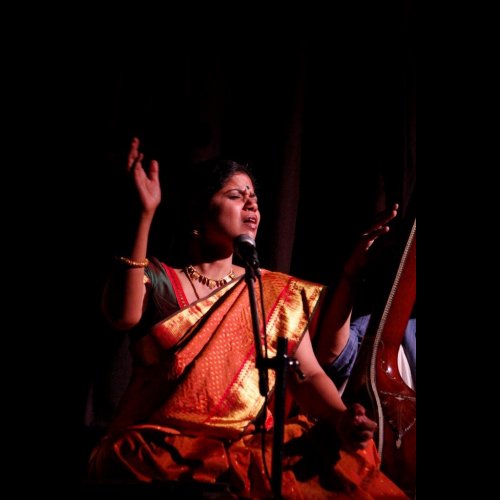
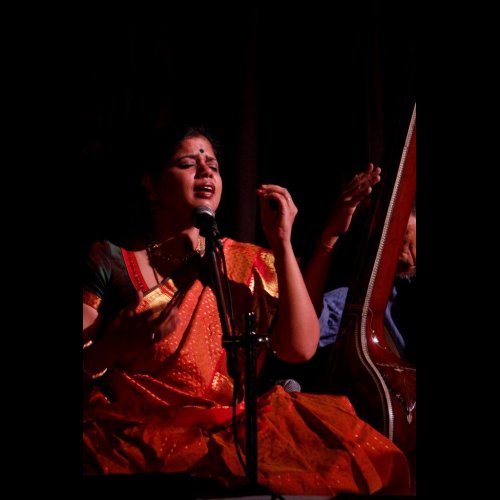
 Dr. Sunil Kothari is a dance historian, scholar, author and a renowned dance critic. He is Vice President of World Dance Alliance Asia Pacific India chapter, based in New Delhi. He is honored by the President of India with Padma Shri, Sangeet Natak Akademi award and Senior Critic Award from Dance Critics Association, NYC. He is a regular contributor to www.narthaki.com, the roving critic for monthly magazine Sruti and is a contributing editor of Nartanam for the past 12 years. Post your comments Pl provide your name and email id along with your comment. All appropriate comments posted with name and email id in the blog will also be featured in the site. |